It's (not) your problem
2022
Installation
Text was written in June 2022
Russia's full-scale invasion of Ukraine took place on February 24, 2022. During this time, more than 4,500 people died, not counting tens of thousands in the occupied territories. Overly 12 million people have been forced to flee their homes. In fact, the Russian-Ukrainian war began 8 years ago with the occupation of Crimea and the invasion of Donbas, which is often forgotten.
Every war has irreversible consequences on many levels, and above all on human life.
"It's (not) your problem" is an exhibition which explores these levels from various perspectives and consists of two parts. At the center of the first part of the exhibition are Ukrainian queer people and the choices they make during the war. Some flee the war to other countries, left traumatized but safe. Some took up arms and went to defend their country. Some, like me, were staying outside of Ukraine for a longer period of time and starting their morning by checking if their loved ones who are staying in Ukraine are safe and alive. The second part of the work is devoted to the Ukrainian cultural heritage, which is being destroyed by Russia. The unification of these parts is aimed at the question: "What is the role of culture and art during the war and do they make any sense if they can be easily destroyed?"
Installation shots from Rietveld Academie:

It’s not your problem
2022neon
The war that is taking place several thousand kilometers away seems alien. Distance affects the experience of war, attitudes towards it and even awareness and interest. Nevertheless, large-scale wars always lead to severe social, economic and political consequences, which are felt not only in the countries directly involved in the wars.
Screenshot from Reuters
C-print on dibond28x38cm
2022
Following the first news of a possible full-scale Russian invasion of Ukraine, the largest news-media outlets are closely following the events. US intelligence named February 16 as the most likely date for the start of the war. On February 15, Reuters aired a live stream from Kyiv’s Independence Square.

A Very Brief and Subjective Queer History of Ukraine
PublicationEdition of 250
2022
The thesis is based on dozens of interviews with members of the queer community and its researchers. This publication was supposed to be the basis for the graduation show, but a full-scale Russian invasion of Ukraine prevented this.

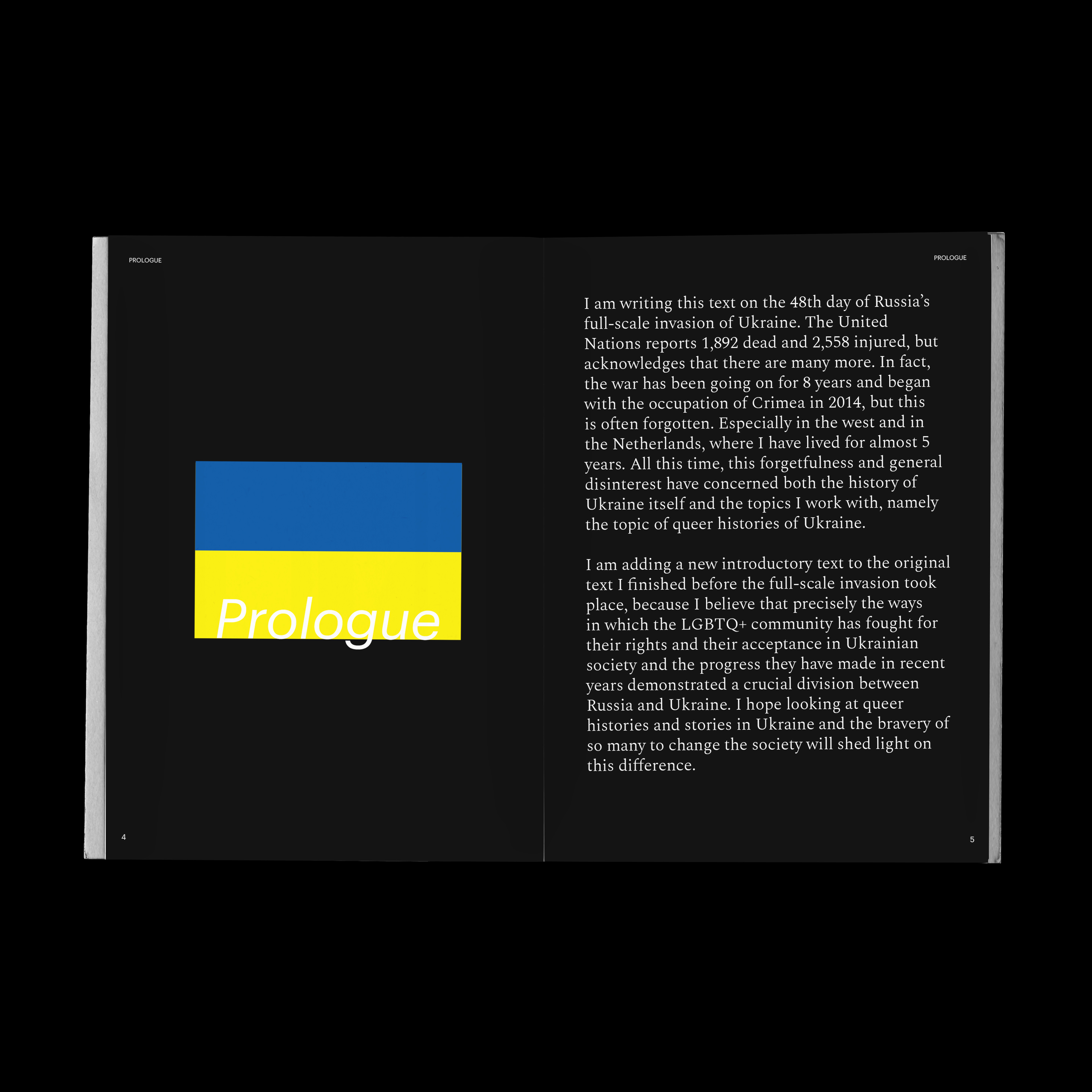

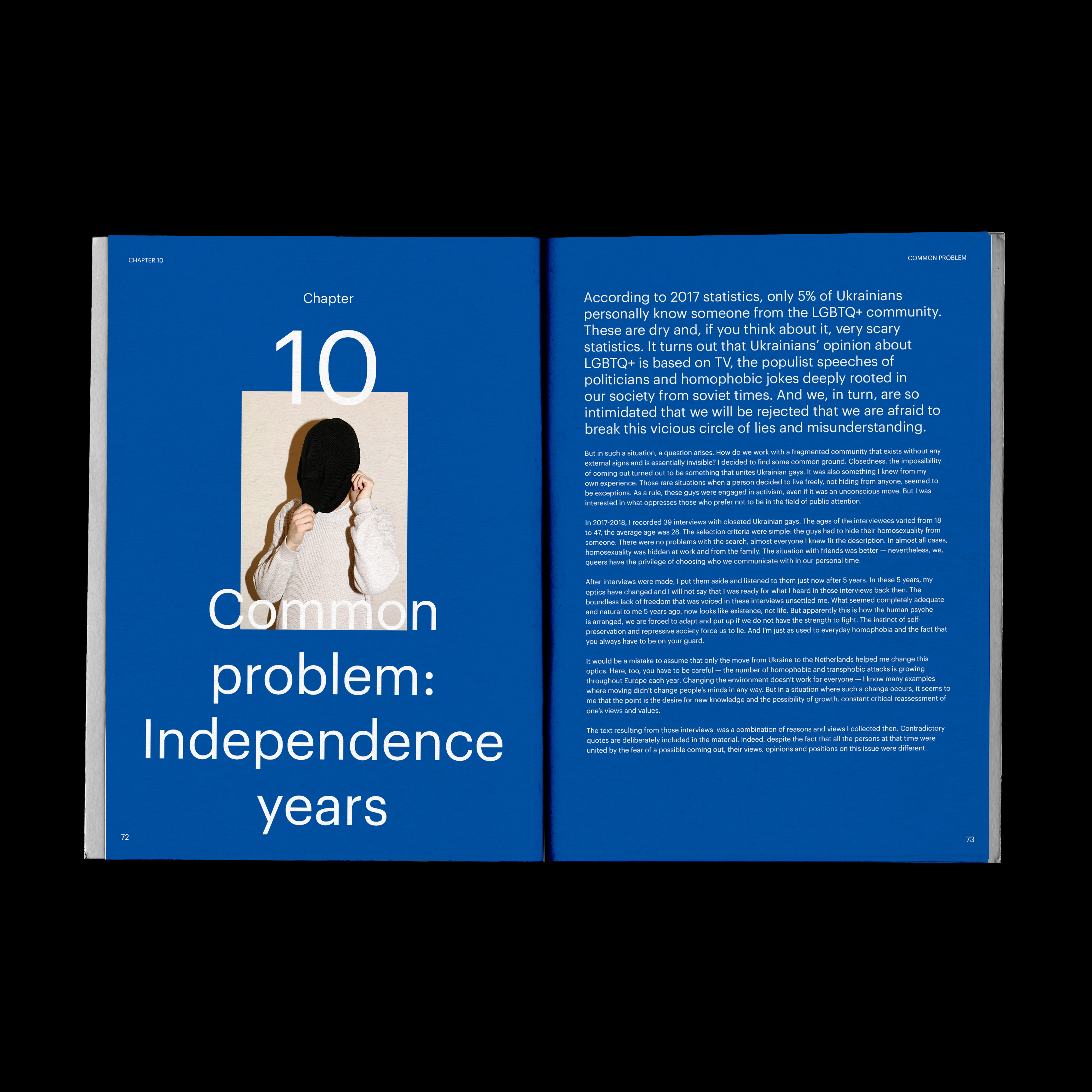



To Know Us Better
Fujifilm DP II print on dibond, text20x30cm
2022
Portraits and interviews with representatives of the Ukrainian queer community who were forced to leave Ukraine because of the war. The project was shot in the Netherlands, Germany, Poland and Spain. Its protagonists include those who left after February 24, and those who left after the occupation of Crimea and the Donbas invasion.
Self-portrait
Tattoo, Epson semi-gloss print24x36cm
2020-2022
Tattoos of the Ukrainian alphabet on my body. Several missing letters are tattooed on other parts of the body. The original meaning of tattoos as a reflection of the migrant’s changing identity changed during the war. The Russian military is scrutinizing people trapped on the occupied territories or those who are trying to flee for pro-Ukrainian tattoos. If found, their owners are tortured or executed.
Screenshot from Google Maps
2022After the start of a full-scale Russian invasion of Ukraine on February 24, Google Maps began highlighting bomb shelters with red or yellow symbols of houses on its maps.
Mom & Dad
Epson semi-gloss print40x60cm
2019
Portrait of my parents, taken after my move to the Netherlands. They refused to leave Ukraine after the invasion began, and I have no idea when I will be able to see them again.
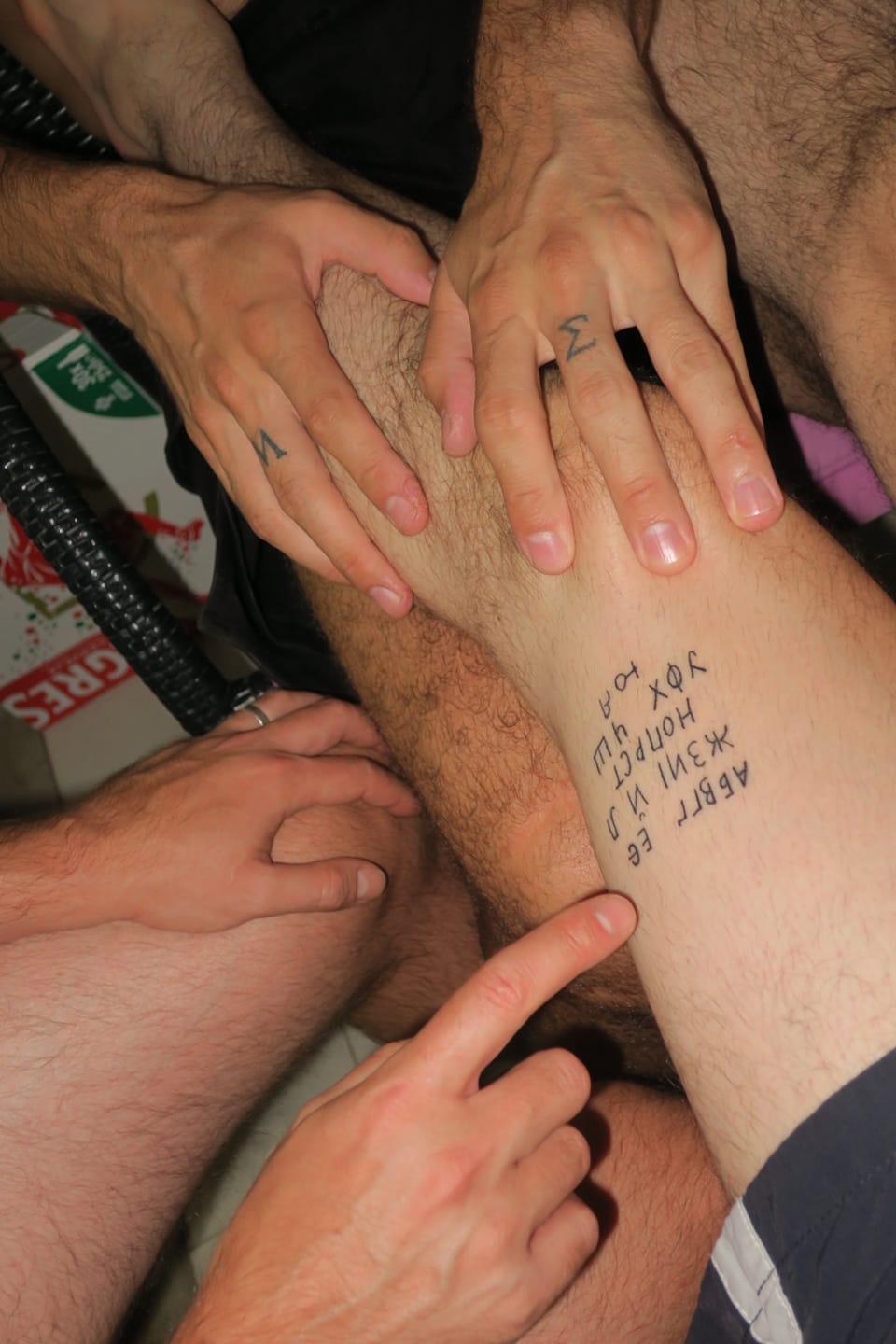
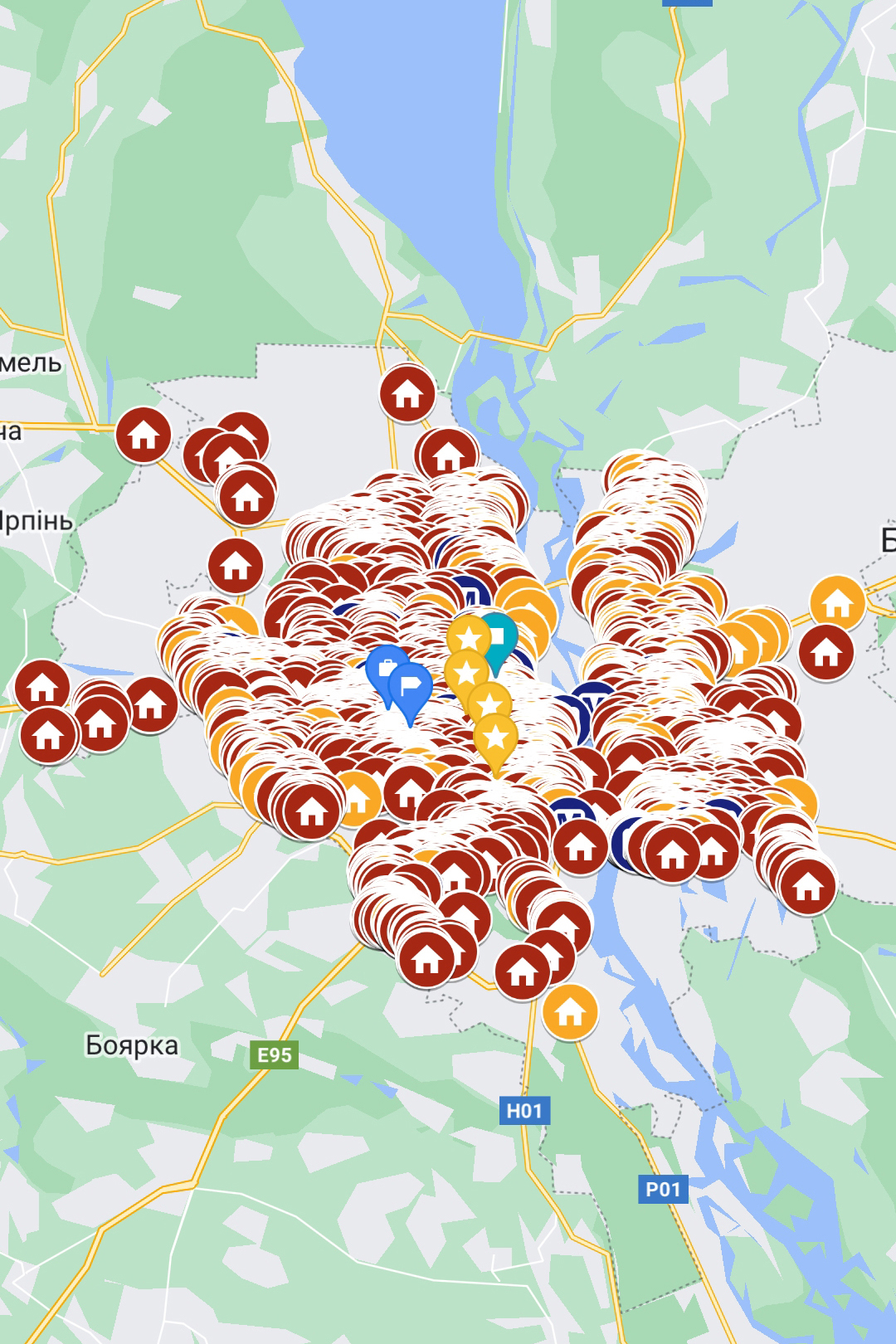

We Were Here
C-print on dibond80x120cm
2018
A series of works depicting real LGBTQ veterans of the war in Donbass. After participating in this project, veteran Viktor Pylypenko created the Association of Ukrainian LGBTQ Military, which before the full-scale invasion numbered about 130 people. Most of them are currently taking part in hostilities.
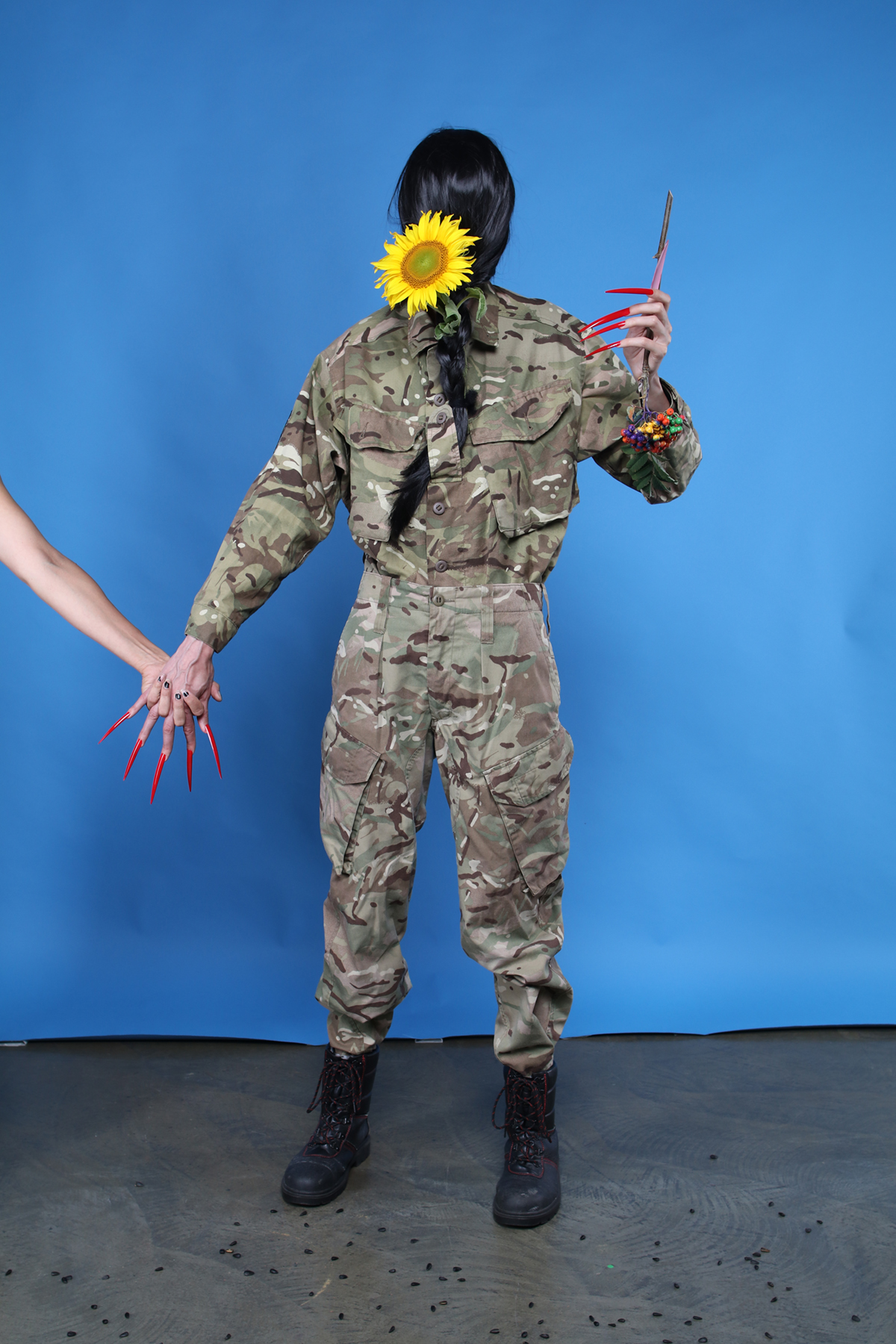


House of culture
Silkscreen on foamboard, text2022
Since the beginning of the full-scale invasion of Ukraine, the Office of the UN High Commissioner for Human Rights (OHCHR) recorded 10,631 civilian casualties in the country: 4,731 killed and 5,900 injured. (figure on June 26). At the same time, the UN confirms that the actual death toll is several times higher. 12 million people were forced to flee their homes, millions of whom went abroad. Russia has also destroyed more than 400 monuments to Ukraine’s cultural heritage, including theaters, museums, architectural monuments, religious buildings and works of art. Data and photos for this project are taken from the site culturecrimes.mkip.gov.ua
Destruction of a lipstick
Found videoIn 2015, when pro-Russian troops captured Donetsk, they turned Isolation, the region’s most prominent contemporary art center, into a prison and torture chamber. The video shows the militants blowing up a sculpture of Ukrainian artist Maria Kulikovska.
